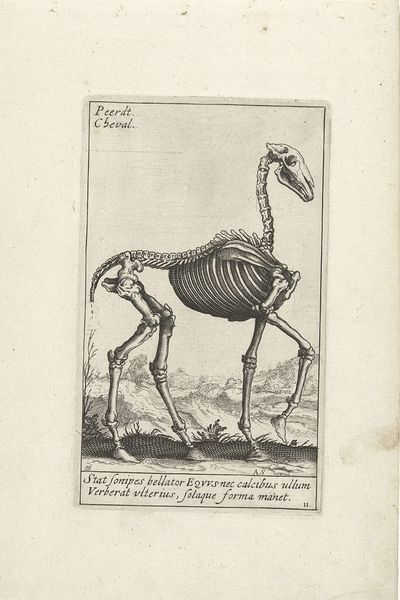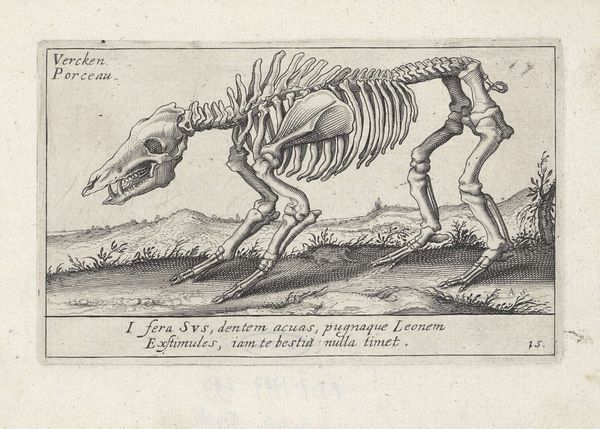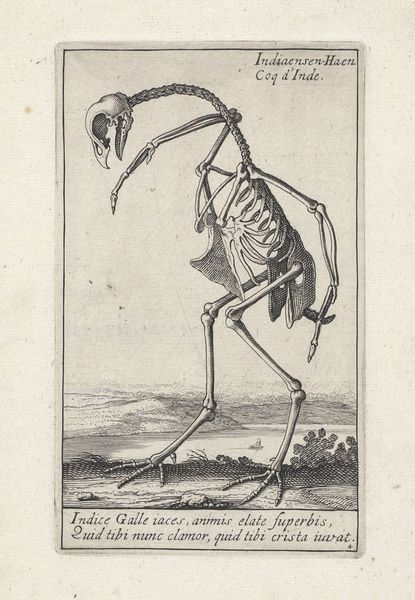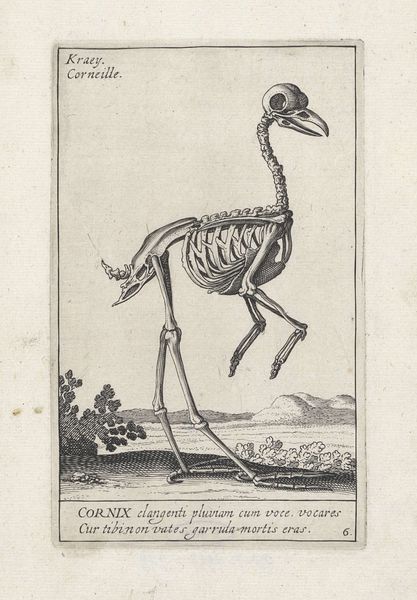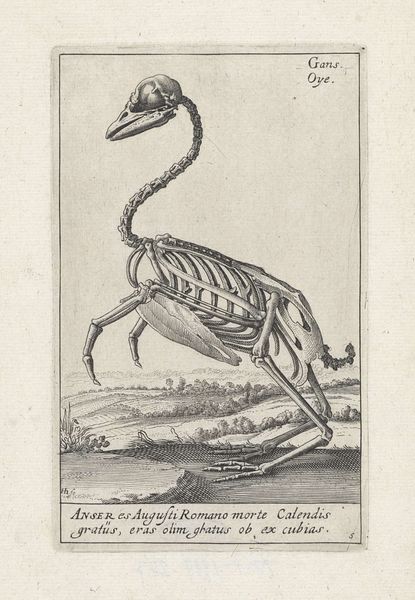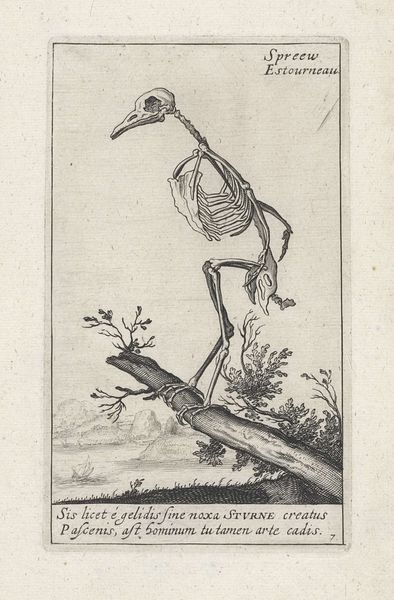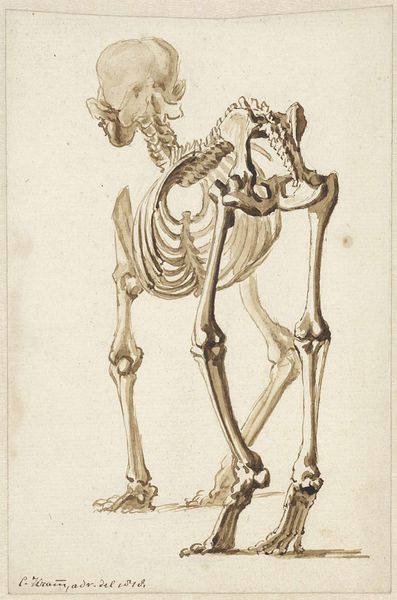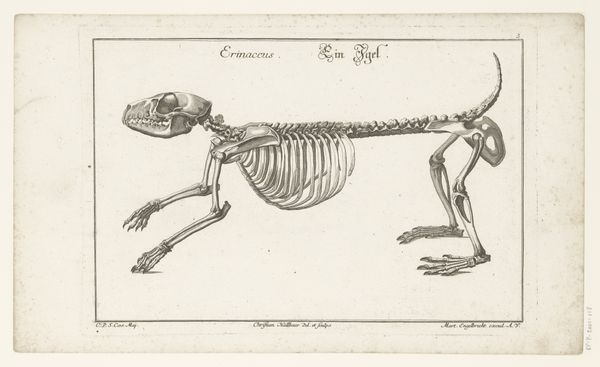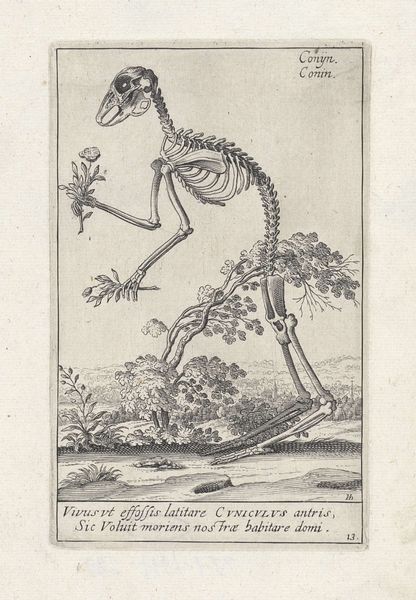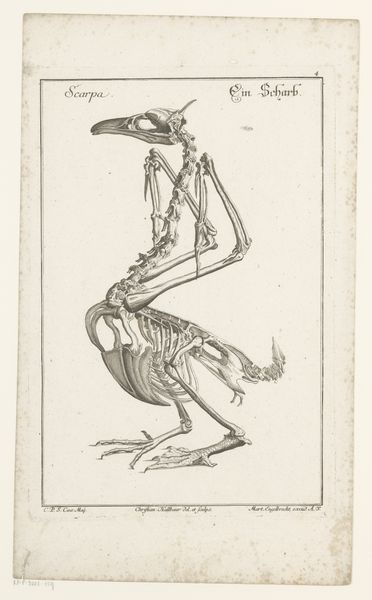
#
light pencil work
#
quirky sketch
#
old engraving style
#
sketch book
#
personal sketchbook
#
idea generation sketch
#
sketchbook drawing
#
pencil work
#
storyboard and sketchbook work
#
sketchbook art
Dimensions: height 156 mm, width 94 mm
Copyright: Rijks Museum: Open Domain
Editor: Here we have Andries Stock’s "Skeleton of a Camel" from 1625-1626. It's currently housed in the Rijksmuseum. The details rendered in this engraving feel so delicate, almost fragile. What can you tell me about the context this piece comes from? Curator: Looking at this work from a materialist perspective, consider the context of printmaking in the 17th century. The materials, the copperplate, the ink, the paper – they were becoming increasingly accessible. Think about how engravings facilitated the widespread circulation of knowledge, including anatomical studies. How does that availability change the perceived value of a single image? Editor: So, it's not just about the image itself, but how that image reached people? Curator: Exactly. The production and consumption of images like this camel skeleton reflects the development of early scientific visual culture. Engravings democratized access to information. Who would typically be seeing a camel skeleton? Who is consuming it in a printed form? How is the labor of Stock present, transformed, in the final image? Editor: It makes you wonder who had access to such rare specimens, and who was shut out, relying instead on images like this one. I hadn't considered how the physical act of printing relates to social structures. Curator: Consider, too, the inscription. A laboring animal, finally granted rest. Is this social commentary creeping into a "scientific" depiction? How is human labor implicitly placed in contrast to the animal's? Editor: That’s a very interesting perspective, seeing how the materials and method of creation were as crucial as the image itself in shaping its cultural impact and even adding meaning to it. Thank you. Curator: And thank you. Thinking through these relations, between materials, labor and dissemination changes how we see even simple images like this.
Comments
No comments
Be the first to comment and join the conversation on the ultimate creative platform.
